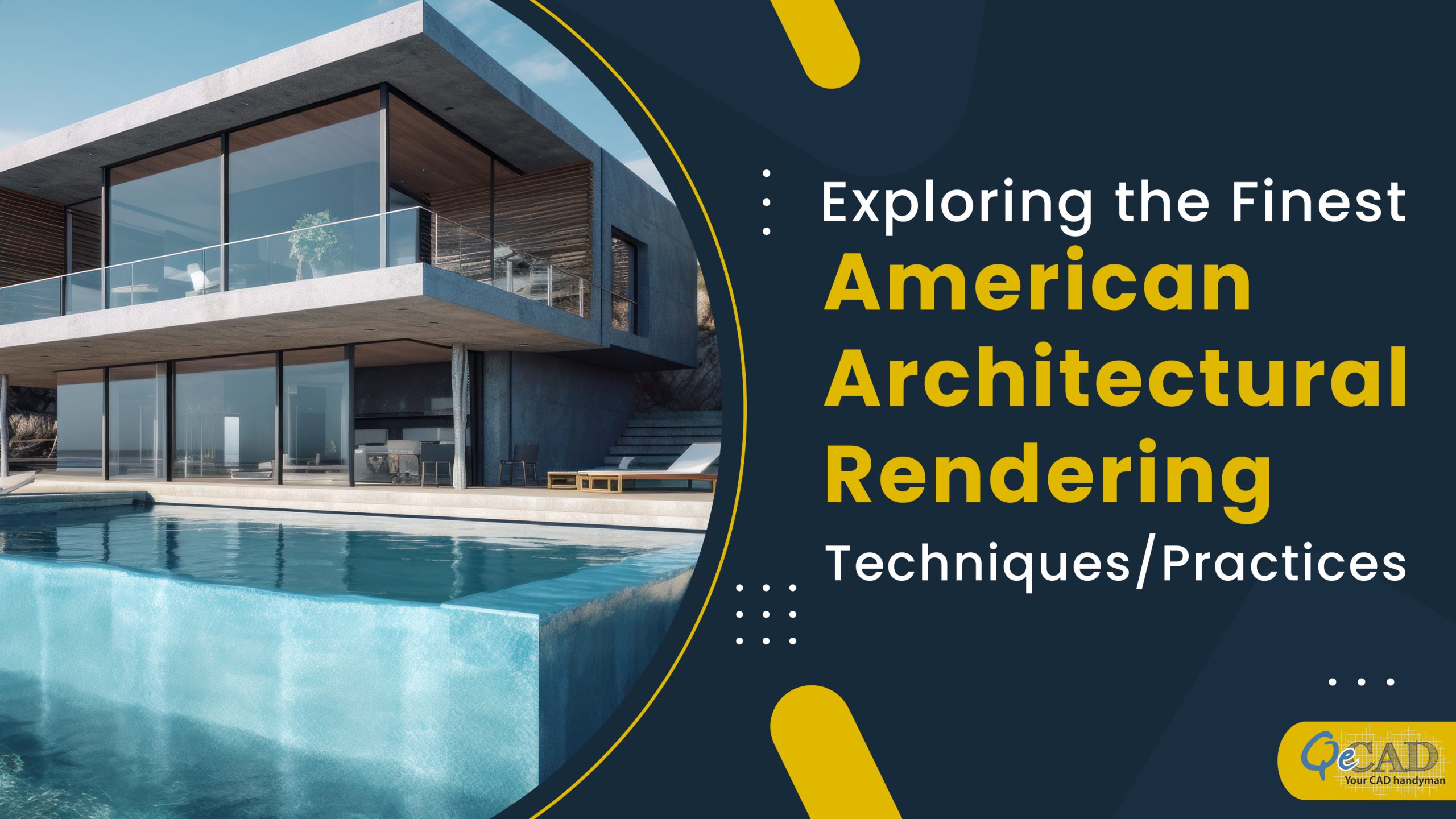
Architecture is a blend of science and art, and one of the crucial aspects of this discipline is architectural rendering. It allows architects, designers, and clients to effectively visualize and communicate design concepts. With the advancement of technology, the field of architectural rendering has experienced significant growth and transformation. In the United States, several rendering practices have gained popularity due to their ability to create stunning visual representations of architectural projects. The article below will uncover some of the most popular American architectural rendering practices and how they have revolutionized the industry.
1) Photorealistic 3D Renderings:
Photorealistic renderings are highly detailed and aim to recreate a design with utmost accuracy. This practice involves using sophisticated software and rendering techniques to produce images that closely resemble photographs. Photorealistic 3D Rendering Services show how the final project will look, allowing clients and stakeholders to envision the space before construction begins. These visuals incorporate cutting-edge lighting techniques, advanced materials, and realistic textures, resulting in a captivating and immersive visual journey.
2) 3D Virtual Tours:
With the upswing of Virtual Reality technology, 3D virtual tours have become increasingly popular in architectural rendering. By employing this approach, users can virtually navigate through a building or space with a sense of true physical presence, as if they were actually there. 3D virtual tours provide an interactive experience, enabling clients to navigate different areas, view specific details, and understand the design comprehensively. Architects can incorporate feedback from clients and stakeholders during the virtual tour phase, making it a valuable tool for collaboration and decision-making.
3) Augmented Reality (AR) Renderings:
Augmented Reality (AR) has gained traction in the architectural industry, offering unique and engaging experiences. AR renderings merge digital models with the physical environment, allowing users to visualize architectural designs in real time through mobile devices or AR headsets. This practice enables architects to overlay digital elements onto physical space, giving clients a sense of scale and context. AR renderings are instrumental in urban planning, as they can overlay proposed buildings onto existing cityscapes, helping stakeholders understand the potential impact on the surrounding environment.
4) Conceptual Renderings:
Conceptual renderings focus on capturing the essence and mood of a design rather than presenting precise details. They aim to convey a project’s overall concept, style, and aesthetic. Conceptual renderings often employ artistic techniques to create visually striking images that evoke emotions and capture the imagination. This rendering practice is beneficial in the early stages of a project, where architects want to communicate their design vision and generate excitement among clients and investors.
5) Interactive Renderings:
Interactive renderings provide a dynamic and engaging experience for users. This practice allows viewers to interact with a rendering by changing viewpoints, altering materials, or adjusting lighting conditions in real time. Interactive renderings are commonly used in presentations, exhibitions, and marketing materials, as they empower clients to engage with the design and make informed decisions actively. They offer a level of interactivity that traditional static renderings cannot match, enhancing the overall communication and understanding of the architectural project.
6) Sustainable Renderings:
With the growing emphasis on sustainability in architecture, sustainable renderings have gained popularity. These renderings focus on showcasing environmentally friendly design features such as green roofs, renewable energy systems, and efficient building materials. Sustainability-focused renderings showcase the advantages of sustainable design, encompassing energy efficiency, minimized carbon emissions, and enhanced comfort for occupants. Architects can effectively communicate their designs’ environmental impact and long-term benefits by visually representing sustainable elements.
Concluding
Architectural rendering techniques in the USA have emerged drastically, all because of technological advancements and software capabilities. Photorealistic renderings, 3D virtual tours, augmented reality renderings, conceptual renderings, interactive renderings, sustainable renderings, interior renderings, and e Exterior Rendering Services are among the most popular practices in the industry today. Each technique offers unique benefits and caters to different stages of the design process, enabling architects and clients to visualize and communicate architectural projects effectively. With the continuous progress of technology, we can anticipate a multitude of innovative advancements in architectural rendering, revolutionizing our perception and comprehension of architecture.
